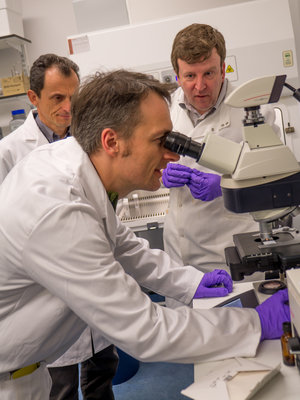Accept all cookies Accept only essential cookies See our Cookie Notice

About ESA
The European Space Agency (ESA) is Europe’s gateway to space. Its mission is to shape the development of Europe’s space capability and ensure that investment in space continues to deliver benefits to the citizens of Europe and the world.
Highlights
ESA - United space in Europe
This is ESA ESA facts Member States & Cooperating States Funding Director General Top management For Member State Delegations European vision European Space Policy ESA & EU Space Councils Responsibility & Sustainability Annual Report Calendar of meetings Corporate newsEstablishments & sites
ESA Headquarters ESA ESTEC ESA ESOC ESA ESRIN ESA EAC ESA ESAC Europe's Spaceport ESA ESEC ESA ECSAT Brussels Office Washington OfficeWorking with ESA
Business with ESA ESA Commercialisation Gateway Law at ESA Careers Cyber resilience at ESA IT at ESA Newsroom Partnerships Merchandising Licence Education Open Space Innovation Platform Integrity and Reporting Administrative Tribunal Health and SafetyMore about ESA
History ESA Historical Archives Exhibitions Publications Art & Culture ESA Merchandise Kids Diversity ESA Brand Centre ESA ChampionsLatest
Space in Member States
Find out more about space activities in our 23 Member States, and understand how ESA works together with their national agencies, institutions and organisations.
Science & Exploration
Exploring our Solar System and unlocking the secrets of the Universe
Go to topicAstronauts
Missions
Juice Euclid Webb Solar Orbiter BepiColombo Gaia ExoMars Cheops Exoplanet missions More missionsActivities
International Space Station Orion service module Gateway Concordia Caves & Pangaea BenefitsLatest
Space Safety
Protecting life and infrastructure on Earth and in orbit
Go to topicAsteroids
Asteroids and Planetary Defence Asteroid danger explained Flyeye telescope: asteroid detection Hera mission: asteroid deflection Near-Earth Object Coordination CentreSpace junk
About space debris Space debris by the numbers Space Environment Report In space refuelling, refurbishing and removingSafety from space
Clean Space ecodesign Zero Debris Technologies Space for Earth Supporting Sustainable DevelopmentLatest
Applications
Using space to benefit citizens and meet future challenges on Earth
Go to topicObserving the Earth
Observing the Earth Future EO Copernicus Meteorology Space for our climate Satellite missionsCommercialisation
ESA Commercialisation Gateway Open Space Innovation Platform Business Incubation ESA Space SolutionsLatest
Enabling & Support
Making space accessible and developing the technologies for the future
Go to topicBuilding missions
Space Engineering and Technology Test centre Laboratories Concurrent Design Facility Preparing for the future Shaping the Future Discovery and Preparation Advanced Concepts TeamSpace transportation
Space Transportation Ariane Vega Space Rider Future space transportation Boost! Europe's Spaceport Launches from Europe's Spaceport from 2012
ESA in miniature
Thank you for liking
You have already liked this page, you can only like it once!
This is a version of the ESA logo like no other: seen through a microscope it measures just over 17 thousandths of a millimetre across, about half the diameter of the average human skin cell.
The logo was carved out of a piece of nickel-based space-grade alloy Inconel using Xenon atoms shot from a plasma ion beam.
While the logo measures 17.43 micrometres (thousandths of a millimetre) in length it is just 700 nanometres (millionths of a millimetre) deep. Click here for an angled view.
“The logo was blasted out of a polished Inconel surface,” explains ESA Young Graduate Trainee Felix Schmidt, serving in ESA’s Materials and Electrical Components Laboratory.
“We created it as practice, in preparation for a project on modelling micromechanical testing. Achieving accurate cuts on a given material is tricky, with many parameters needing to be optimised to get the correct size and depth of the geometry, but this logo shows the kind of accuracy we can reach.”
To get an idea of its actual size, see the logo beside a human hair in this microscopic view – created using stacks of visible light microscope images to achieve the depth of field to get both objects in focus at once.
Felix adds: “Next the plan is to cut out a pillar of metal, then crush it using a nano-indenter, having meanwhile created a high-fidelity ‘digital twin’ of the pillar to accurately model how it behaves as force is exerted on it.”
ESA is already active at creating ‘digital twins’ of space systems at higher scales, explains engineer Michael Mallon, working on digital spacecraft design and verification, “but our aim here is to demonstrate a predictive capability right down to the meso-scale, the next level up from atoms.”
-
CREDIT
ESA-F. Schmidt -
LICENCE
ESA Standard Licence

Acoustic inspection

Infographic: ESA Technology CubeSats, the first 10 years

Astronauts in the lab

Proba-3 infographic: Spacecraft















 Germany
Germany
 Austria
Austria
 Belgium
Belgium
 Denmark
Denmark
 Spain
Spain
 Estonia
Estonia
 Finland
Finland
 France
France
 Greece
Greece
 Hungary
Hungary
 Ireland
Ireland
 Italy
Italy
 Luxembourg
Luxembourg
 Norway
Norway
 The Netherlands
The Netherlands
 Poland
Poland
 Portugal
Portugal
 Czechia
Czechia
 Romania
Romania
 United Kingdom
United Kingdom
 Slovenia
Slovenia
 Sweden
Sweden
 Switzerland
Switzerland

























